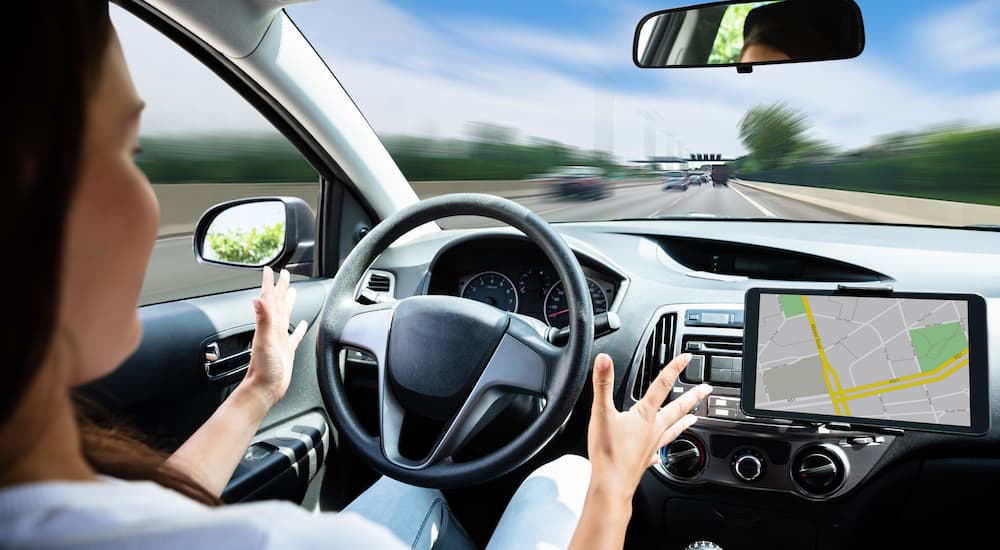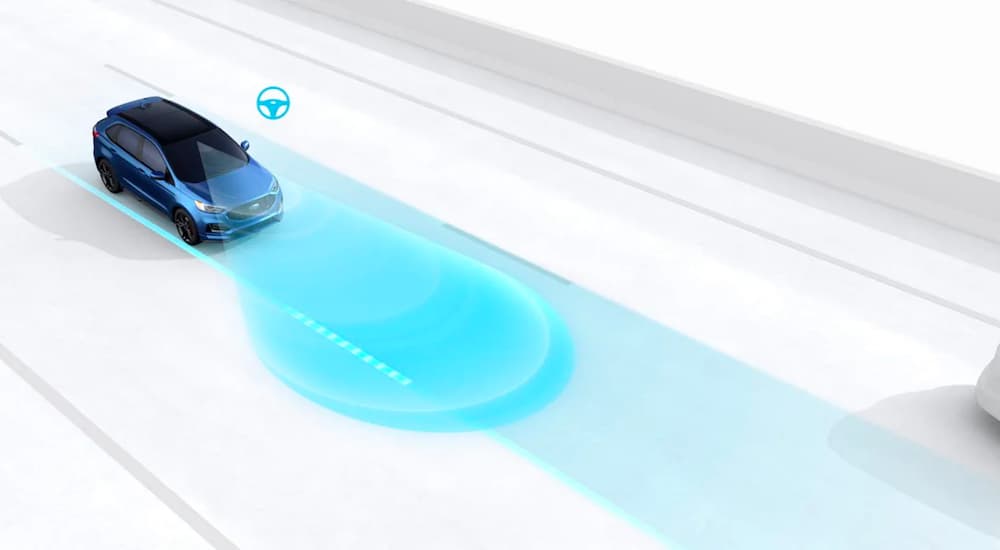At this point, most of us have heard about the promise of self-driving cars: vehicles that can cruise down the highway and navigate city streets without the need for a human behind the wheel. Supporters of this technology dream of a future where fatal accidents caused by human error are completely eliminated, and our roads become safer for everyone. But others are more wary of vehicle automation and worry about the dangers of turning control of our cars over to computers. And, of course, there are also those in the middle, either cautiously optimistic about the technology or unsure but open to persuasion.
While fully self-driving cars aren’t quite here yet, semi-autonomous features are becoming more and more common in the automotive industry. Automakers often list these features under the “safety” category, but is that entirely accurate? Let’s take a look at current and future autonomous driving technologies and how they affect your safety out on the road.
Autonomous Driving Levels
There’s a system of different levels that’s commonly used to discuss vehicle automation, and understanding it can help make it easier to keep track of what different features do. So here’s a breakdown of the levels and what they mean:
- Level 0: A human driver is actively engaged at all times, but some driver assistance features may provide warnings and momentary action (automatic emergency braking, lane departure warning, blind spot warning).
- Level 1: A human driver is actively engaged at all times, but some driver assistance features may control either your speed or steering for more significant periods (adaptive cruise control, lane centering).
- Level 2: A human driver is actively engaged at all times, but driver assistance features may control your speed and your steering at the same time (highway pilot, Super Cruise).
- Level 3: An automated system handles the driving, but a human must be ready to take over when the system requests. Certain conditions or locations may require an engaged human driver (Vehicles at Level 3 and above are not currently available in the US).
- Level 4: An automated system handles the driving fully but may only be allowed to operate in certain areas.
- Level 5: An automated system handles the driving fully in all locations and situations.
Examples of Level 0 Driver Assistance
Driver assistance technologies that fall under Level 0 have been around for a while now and have become so common that they are standard on all kinds of cars, SUVs, and trucks from a variety of automakers. These features include collision alerts with automatic emergency braking, lane departure warning, blind spot alert, and rear cross-traffic alert.
These systems are among the least controversial and are widely considered to be safety features, both by government organizations like the National Highway Traffic Safety Administration and independent nonprofits like the Insurance Institute for Highway Safety (IIHS). Studies by IIHS have shown that these features reduce real-world crashes.
Examples of Level 1 Driver Assistance
Driver assistance that falls under Level 1 is newer but not uncommon. You can find lane centering (aka lane keep assist) and adaptive cruise control on many vehicles currently on the market. Lane centering uses corrective steering to prevent you from drifting out of your lane, while adaptive cruise control uses automatic braking to maintain a set following distance between you and the vehicle in front of you while cruise control is active.
It’s easy to argue that these features are also safety tech. Corrective steering is generally gentle and only prompted by a driver drifting out of a lane without activating their turn signal. Traditional cruise control is an extremely common feature that can be dangerous when surrounding traffic slows down suddenly, which is something that adaptive cruise control handles well.
The Growing Pains of Level 2
To get to Level 2, all you have to do is have two Level 1 features (adaptive cruise control and lane centering) activated simultaneously. Because of this, some automakers have been able to offer features like GM’s Super Cruise, Nissan’s ProPilot Assist, and Tesla’s infamous Autopilot. These features boast that they let you take your hands off the wheel as the vehicle takes care of the drive, but if you read the fine print, you’ll see that they all caution that the driver must be attentive and ready to take over at all times. Most of these systems are also limited to certain areas, typically highways that have been mapped out by the automaker.
If you know what these systems are and understand their limitations, they can certainly make driving safer. It’s easy to see how a feature like this could prevent driving fatigue on long road trips, where it’s easy to get tired without realizing it and start drifting or losing track of the speed of traffic. But if you put too much trust in these systems, they can actually end up making you more dangerous behind the wheel.
According to a study conducted by IIHS in 2022, 12% of ProPilot Assist users, 42% of Autopilot users, and a stunning 53% of Super Cruise users felt comfortable thinking of their vehicles as being fully self-driving. If you think of your vehicle as fully autonomous, then you might be comfortable paying less attention to the road, which is not something these systems are actually designed to accommodate. If you’re distracted and suddenly need to take over, then you might not react fast enough, which could have terrible consequences.
One big problem here is that some automakers are overpromising what these systems can deliver. Tesla, in particular, is a major offender. It refers to its system as Autopilot or even Full Self-Driving Capability. These terms strongly imply that the vehicles are autonomous. But Tesla’s own website states that “Autopilot, Enhanced Autopilot, and Full Self-Driving Capability are intended for use with a fully attentive driver, who has their hands on the wheel and is prepared to take over at any moment.” Drivers who are pulled in by the promise but ignore the fine print can end up being dangerous to themselves and all the vehicles around them.
The Future of Automation
As we move past the in-between phases of Level 2 and Level 3 and get to technologies that fall into Level 4 and Level 5, some of the issues surrounding the growing pains of today will go away. When people can trust a self-driving vehicle, they’ll be free to get as distracted as they like, and there won’t be a problem. Driver error is a factor in the vast majority of crashes, so removing it from the equation may well make our roads safer in the future.
However, that future is only as good as the technology that creates it. If self-driving cars prioritize speed and convenience too much, they could make many of the same mistakes that human drivers make. And systems would have to be highly reliable and secure; otherwise, malfunctions or hacking could have deadly consequences. With all of these worries, it’s no wonder that 68% of Americans admitted to being “afraid” of self-driving cars in a 2023 survey conducted by AAA.
Autonomous Systems Are Here to Stay
With technology this advanced and relatively recent, it’s no wonder the topic is complicated. That can be frustrating for drivers who are trying to be informed on the subject. So, while there are some exceptions, let’s conclude with a simple breakdown. Driver assistance features and Level 1 autonomous driving systems are clearly safety features and should be considered a plus when shopping for a new vehicle.
Level 2 features can enhance your safety behind the wheel, but only if you understand their limitations and act accordingly: stay fully attentive and alert at all times. Fully autonomous systems aren’t available to everyday American drivers yet, so we’ll have to keep an eye on the technology as it emerges in order to see how safe it actually is in the real world.






